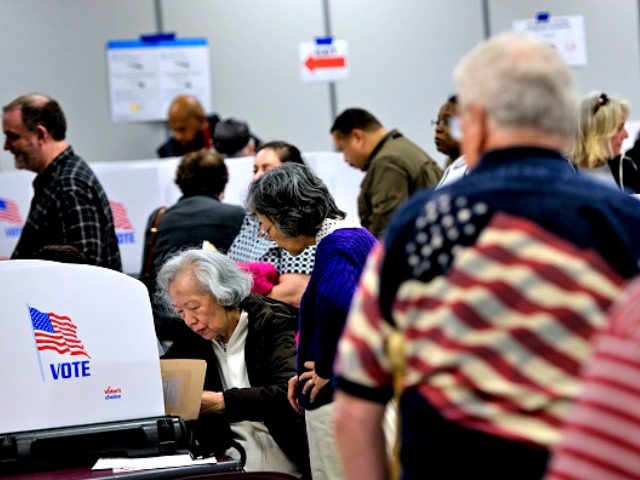WASHINGTON, DC – The Supreme Court on Monday upheld Texas’s legislative districting plan by a 5-4 decision against charges that the legislative lines violated the Voting Rights Act of 1965 (VRA) or the Fourteenth Amendment to the U.S. Constitution.
The Supreme Court reviewed the legislative map drawn by a three-judge panel in 2013 to slightly modify the lines developed by the Texas legislature in 2011. This decision is the final word in litigation spanning more than seven years.
Even though this judge-adjusted map had been used in elections in 2014 and 2016, in 2017 “the three-judge court reversed its prior analysis and held that some of the districts in those plans are unlawful,” Justice Alito wrote for the majority. He continued:
We now hold that the three-judge court committed a fundamental legal error. It was the challengers’ burden to show that the 2013 Legislature acted with discriminatory intent when it enacted plans that the court itself had produced. The 2013 Legislature was not obligated to show that it had “cured” the unlawful intent that the court attributed to the 2011 Legislature. Thus, the essential pillar of the three-judge court’s reasoning was critically flawed.
“When the congressional and state legislative districts are reviewed under the proper legal standards, all but one of them, we conclude, are lawful,” he added.
“Then, as now, federal law restricted the use of race in making districting decisions,” the majority explained. Also in the Fourteenth Amendment, the “Equal Protection Clause forbids ‘racial gerrymandering, that is, intentionally assigning citizens to a district on the basis of race without sufficient justification, or “vote dilution … of racial or ethnic minorities.”
“While the Equal Protection Clause imposes these important restrictions, its application in the field of districting is complicated,” Alito admitted. “For one thing, because a voter’s race sometimes correlates closely with political party preference, it may be very difficult for a court to determine whether a districting decision was based on race or party preference.”
“At the same time that the Equal Protection Clause restricts the consideration of race in the districting process, compliance with the Voting Rights Act of 1965 pulls in the opposite direction,” he explained. “It often insists that districts be created precisely because of race.”
“Since the Equal Protection Clause restricts consideration of race and the VRA demands consideration of race,” Alito concluded, “a legislature attempting to produce a lawful districting plan is vulnerable to ‘competing hazards of liability.’”
“Whenever a challenger claims that a state law was enacted with discriminatory intent, the burden of proof lies with the challenger, not the State,” the Court ruled as it identified problems with the lower court’s decision.
“Redistricting is primarily the duty and responsibility of the State, and federal court review of districting legislation represents a serious intrusion on the most vital of local functions,” the justices reasoned.
The Court rejected the lower court’s opinion one-by-one, including finding fault with the fact that Texas appealed the ruling against it.
“Congress gave the State the right to appeal, and no bad motive can be inferred from its decision to make use of this right,” wrote Alito.
There was only one state legislative district – House District 90 – that the Court invalidated as a racial gerrymander, holding that various racial groups had pulled the legislature in different directions, and the net result is that race became the predominant factor in finalizing the lines of that district, in violation of the Voting Rights Act.
The Supreme Court held that every other district in the Texas House, as well as every district in the Texas Senate and each congressional district for the U.S. House of Representatives, were fully consistent with the Voting Rights Act and the Constitution’s Fourteenth Amendment.
Justice Sonia Sotomayor dissented, joined by the other four justices. At times her dissent provoked comments from the majority.
For example, in one footnote, Alito pushed back by writing:
The dissent is simply wrong in claiming over and over that we have not thoroughly examined the record. The dissent seems to think that the repetition of these charges somehow makes them true. It does not. On the contrary, it betrays the substantive weakness of the dissent’s argument.
This decision is a win for Texas and seen as a victory for a conservative view of the VRA and the Fourteenth Amendment.
The case is Abbott v. Perez, No. 17-108 at the Supreme Court of the United States.
Ken Klukowski is senior legal editor for Breitbart News. Follow him on Twitter @kenklukowski.

COMMENTS
Please let us know if you're having issues with commenting.